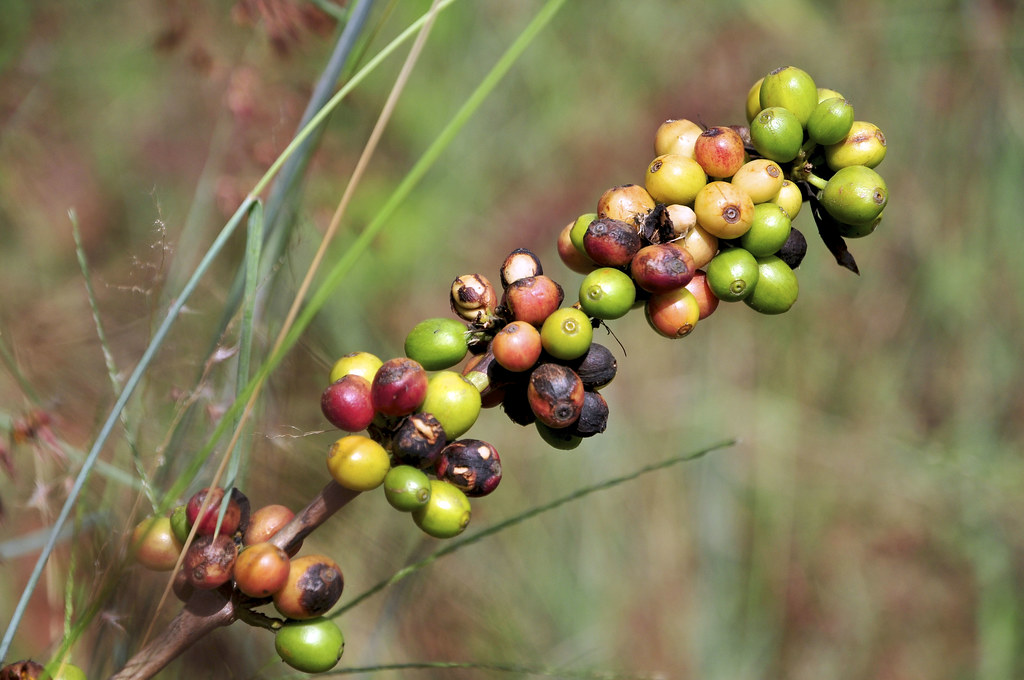
A group of farmers in Central Kenya, frustrated by dwindling yields and low returns from coffee and other cash crops in the area have found solace in highland arrowroot, which does well even in dry land, and which is earning them upto Sh100,000 per harvest.
The farmers from Kiamabara village of Mathira constituency say the future is bright as few farmers are interested in arrow root cultivation, even as demand soars.
Traditionally, arrowroots do well in swampy grounds but these farmers have proved otherwise. Alice Wambui Macharia who terms her farm as a barren land having not even fed her family from it says all is not lost and she hopes the project will turn around the situation. "I had always been skeptical that any crop could do well in my farm but having witnessed what has happened in neighbouring farms, I believe all is not lost," says Wambui.
In her three-acre piece of land where she practices mixed farming, Wambui has set aside a potion where she has planted the highland arrowroot which is now bringing life to the dry farm. The project which is relatively within the rich of many farmers in Central Province has given residents of once again earning in-come from their farms. "Since I ventured into arrow roots farming, I cannot regret; I am even thinking of expanding the farm. My first harvest gave me Sh 100, 000," says Wambui. The same small portion has pro-vided her family with enough food for consumption.
Related News: The golden tuber: How arrowroot farming has transformed a Kakamega farmer’s life
The farmer says though many residents are yet to realise the potential of arrowroot farming, it would soon overtake the coffee farming which has been the main cash crop in Mathira. She says the crop requires minimal maintenance and calls on other farmers to diversify to withstand the erratic weather. "Many farmers continue languishing in poverty as they have to wait for long to be paid coffee bonuses which comes once in a year. I am living proof that it is not only coffee which can do well here," she added.
Frequent visits to her farm by envy residents is clear indication arrow-roots farming would be the next most sought after crop by farmers in Mathira. Wambui hosted farmers from two districts in Mathira during an agricultural field day to educate farmers on the importance of diversifying and adopting new crops to make money and feed their families.
However, she says the Government needs to create awareness on arrowroots consumption saying not many Kenyans embrace the crop as a common delicacy. She also says starting up requires one to raise enough capital depending on the space, a reason she says has seen many farmers shy away from the project.
She is looking forward to increased in-come and high yields and hopes to use the cash earned to start a dairy farm. "By the end of this year this venture will have expanded to a point where I will be able to draw funds to sponsor dairy cows rearing project something I have also yearned to do," she added. Arrowroots are among the traditional food referred to as orphan crops by the Ministry of Agriculture due to their underutilisation.
According to National Agriculture and Livestock Extension Program (Nalep) document, the new highland arrowroot production is taking root in central region which will provide permanent solution to food shortage. It is also said that folks in urban set-tings are now shifting to eating arrowroots mostly for breakfast in place of other fatty foods which will in days to come make shape their market.
Related News: Mumias arrowroot farmer adopts value addition to improve earnings & provide employment
Related News: Agritech startup giving market to small-scale banana, pumpkin, sweet potato, arrowroot & yam growers
Nalep program is about empowerment of the communities to take charge of their own development initiatives. Through a well researched and testing farming technologies farmers were able to adopt a new technology introduced by Nalep. With the growing demand of traditional food (Orphaned crops) Nalep is encouraging farmers to increase production of these crops because they are drought, disease and pest resistant.
Under Nalep's guidance, the focal area known as Gitumbi was divided into four blocks and in one. of the blocks, a Common Interest Croup (CC) called lrati B in Kigumo, Murang’a .County, consisting of 15 members can attest to the productivity of the highland Arrow-root production technology.
Mama Lucy Muthoni, a local farmer in the area, took up the new technology in 2009 when Nalep trained the local farmers on how to grow food crops and ensure food security. Arrowroots are mainly grown in swampy areas and since Kigumo area in not swampy, members were taught on how to crate their own swampy spots for planting arrowroots.
Write comment (0 Comments)



 Farmers in the deluge prone Bunyala area of Budalangi who have traditionally lost their harvest due to incessant floods are now assured of safety of their harvests thanks to community granaries that are built on dry areas. The granaries, built through pooling together of resources by local farmers, ensure that anytime farmers harvest they place the surplus in the granaries which they can then get anytime they want for home consumption and for sale.
Farmers in the deluge prone Bunyala area of Budalangi who have traditionally lost their harvest due to incessant floods are now assured of safety of their harvests thanks to community granaries that are built on dry areas. The granaries, built through pooling together of resources by local farmers, ensure that anytime farmers harvest they place the surplus in the granaries which they can then get anytime they want for home consumption and for sale.











